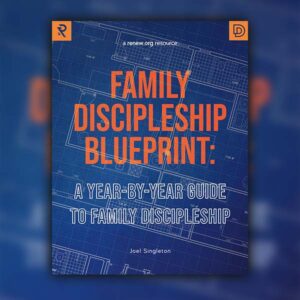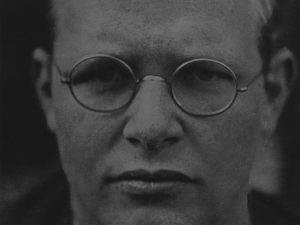The Stages of Disciple Making

Jesus Made Disciples in Five Phases
Jesus took three and a half years before commissioning his disciples as disciple makers. His disciple making combined grace + truth + time and can be understood in five phases. His disciples started as non-believers and ended as disciple makers and church leaders.
So, what were the phases of Jesus’ disciple making master plan?
A few years ago, I led a group of discipleship leaders (and others) to Israel to follow the life of Jesus together and to explore his phases of disciple making. Bill Hull and James Fleming joined as subject experts.
Bill is a close friend and has published more on discipleship than any other leader in the last thirty years. Bill has written extensively about four phases (the first three are the same as what you will see below).
James Fleming is a legend in Israel. He lived there for over thirty years, training Arab and Israeli tour guides on the archaeology of Jesus’ life. He is considered by many to be the world’s leading teacher of biblical archaeology and is a devout Christian. He has written on the phases of Jesus’ ministry and has personally walked everywhere in Israel that the Bible says Jesus walked (and that is a lot of walking!). He has a keen sense, in his bones, of what it felt like to follow Jesus around in Israel.
Both Bill and James affirmed that the following phases are a legitimate mapping of the phases of Jesus’ ministry that turned the disciples into disciple makers.
A presidential term in the U.S. is four years. Jesus only took a little over three years to turn those who initially did not know him into disciple makers. Those three years led to the development of men who changed history.
Jesus followed a timeline with his disciples that resulted in a multiplying movement and the rapid expansion of the early church—and resulted in disciple making.
We have identified five phases and have found these phases particularly helpful in seeking to raise up disciple makers in the local church. I am persuaded that the phases of Jesus’ master plan apply just as much today as they did in the first century.
Let’s look at each one and note how they can help you make disciple makers.
1. “Come and See” Phase: John 1:39–4:46
The first phase of the journey to make disciple makers begins with Jesus’ baptism by John at the Jordan river, likely in the year 26 A.D. (C.E.) The Gospel of John provides a good picture for us. John describes the day after Jesus’ baptism.
The next day again John was standing with two of his disciples, and he looked at Jesus as he walked by and said, “Behold, the Lamb of God!” The two disciples heard him say this, and they followed Jesus. Jesus turned and saw them following and said to them, “What are you seeking?” And they said to him, “Rabbi” (which means Teacher), “where are you staying?” He said to them, “Come and you will see.” So they came and saw where he was staying, and they stayed with him that day, for it was about the tenth hour. (John 1:35–39)
This text describes the first time Andrew and Peter meet Jesus. I like Jesus’ response to the fact that they were seeking (an interesting word), he simply said: “come and see.”
This first phase is aptly called the come and see phase because, for some time, the disciples are simply in relationship with Jesus watching what he says and does. They get to experience Jesus at the wedding in Cana described in John 2 (a highly relational event where they also shared some good wine), Jesus turning over the tables in the Temple as described in John 2, a discussion mentioned in John 3 with Nicodemus at night (on how he had to be born again), an encounter with the Samaritan woman at the well from John 4 (it is a cool well that you can see and experience to this day), and finally to Jesus being rejected in his home town of Nazareth, which was a small town with only several hundred people (in Luke 4).
In each of these settings, there are two things to note:
- They are simply in relationship with Jesus (getting to watch and know him in both enjoyable and tough situations)
- They are not yet called into a commitment. They get a front-row seat to see and listen to what God would do (and does do) in a real human life.
Conversion is a process and Jesus loves his disciples well by letting them get to know him before he calls for a commitment.
How do we apply the principles from this phase today?
In a like manner, we must remember that both parts of discipleship are a process—it is a process before conversion and it is a process after conversion. This first phase is before conversion. Like Jesus, we need to warmly welcome those who do not yet believe into relationships where we love them, spend time with them, and let them “see our lives.” Because of who we are as disciple makers, that will involve a lot of watching us talk about Jesus and real life and church. The lives we live are very important. The substance of the first phase is relationship and exposure.
We hope and pray that they will see our good lives and ask us for the reason for the hope that we have (1 Peter 3:13–17; Matthew 5:14–16). Non-believers are looking for love and life. Let them see that in our lives! Invite them to small groups, church, and especially relational gatherings. Help them to hear the Word of God, privately and publicly. If you can, help create Sunday gatherings that encourage and develop disciples, but also make room for non-Christians and seekers who just want to “come and see.” First Corinthians 14: 25 describes non-believers in the early church services who would be, “falling on their faces, worshipping God and declaring that God is really among you.”
Key points in the first phase:
- Discipleship and conversion are processes, give people space
- People need relationships, love, and to see our good lives
- Expose them to the Word of God
2. “Come and follow Me” Phase: Matthew 4:19; Mark 1:16–18
The next phase in Jesus’ strategy to develop disciple makers occurred when he moved from Nazareth to Capernaum. This town becomes the home base of his public ministry. It was a town of two to three thousand people in the first century, on the shores of the Sea of Galilee (and the ruins of the town, including the synagogue, Peter’s mother-in-law’s house, and other sites from Jesus time are still in existence to this day).
Note Matthew’s description of the turning point into this phase (4:12–17):
Now when he heard that John had been arrested, he withdrew into Galilee. And leaving Nazareth he went and lived in Capernaum by the sea, in the territory of Zebulun and Naphtali … From that time Jesus began to preach, saying, “Repent, for the kingdom of heaven is at hand.”
This phase is punctuated by Jesus’ invitation for those who have been in a relationship with him and have been watching him to now come and follow him. He asked them to make a decision. Matthew 4:18–19 describes it succinctly.
While walking by the Sea of Galilee, he saw two brothers, Simon (who is called Peter) and Andrew his brother, casting a net into the sea, for they were fishermen. And he said to them, “Follow me, and I will make you fishers of men.”
As we have stated elsewhere, verse 19 is a key verse by which we can define a disciple. The definition is contained in the invitation. A disciple is someone who is following Jesus (follow me), being changed by Jesus (and I will make you), and committed to the mission of Jesus (fishers of men).
Once this phase started, it led the disciples, as those who had now made the decision to follow Jesus, more and more deeply into the life of a disciple. They continued to see, up close and personal, what Jesus was all about. They watched and listened as Jesus healed the demonic (Luke 4: 31–37), healed Peter’s mother-in-law (Mark 1:29–34), went about teaching throughout Galilee (Luke 4:42–44; Mark 1:35–39), cleansed the leper (Mark 1:40–45) and the like.
During this phase, Jesus exposes his disciples to a broader and deeper understanding of his teachings and the implications of his kingdom. They also learn by watching the reactions of people to Jesus and their questions for him. They are in a relationship with Jesus and with each other. Bill Hull estimates that there are 70 to 120 people involved with Jesus in this phase.
The broader community following Jesus is key. It takes a broader relational community around which new beliefs can be explored, expressed, practiced, and nurtured. In this phase, Jesus is discipling his followers, with the help of a new community.
How we apply the principles from this phase today?
The key turning point in this phase is commitment. The disciples have responded to Jesus’ invitation to follow him. They were prepared for this decision because of the relationship and trust established in phase one. Likewise, people enter this phase today when they turn to Jesus as followers and involve themselves in the community of a disciple maker(s). They still do not understand what it really means to trust and follow Jesus, but they are on the journey and in a relational community of disciples.
Remember to actively engage those who are making the decision to follow Jesus in further relationships—not just with you the disciple maker, but with others who collectively form a discipling community (a church).
Continue to expose them to true kingdom living and the fullness of Jesus’ teachings and especially the real-life struggles involved in following Jesus. Conflicts will surface and that should be expected. Relational conflicts are necessary to a disciple’s development.
Do not call people while in this phase of disciple making. They are not yet ready, and they have not proven the genuine nature of their commitment to following Jesus. We do not yet know if they will be Faithful, Available, Teachable, Sendable, and Obedient (the acronym FATSO). This is an area where many of us make mistakes. We meet people who say the right things, they look good early on, seeming to get it and we decide to invest in them as small group leaders or disciple makers or youth leaders. Slow down: Jesus shows us by his example how to pick such people. This is also likely the reason why Paul told Timothy, “Do not be hasty in the laying on of hands” (1 Timothy 5:22).
Key points in the second phase:
- Start with people who have made the commitment to be disciples.
- Expose them to continued relationships, more teaching, and a broader discipling community.
- Let them see what it is to be a disciple in “real life,” with conflicts, tensions, etc.
- Resist the temptation to invite people from this phase into being disciple makers.
- Spiritual infants and spiritual children are most common in this phase.
Look for the next three phases in Part II next week.
For King Jesus,

If you have enjoyed reading this, please consider joining our email list!










